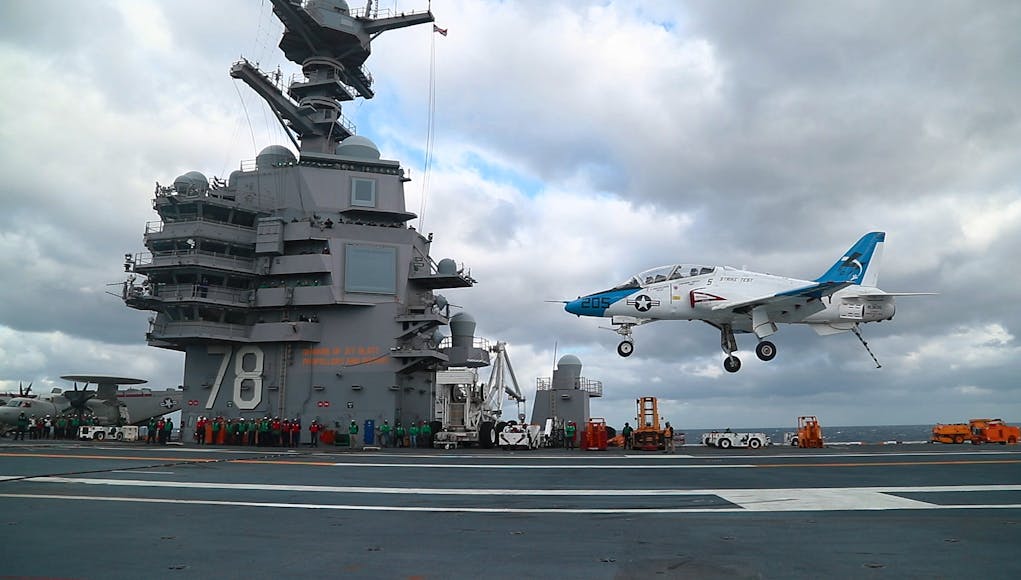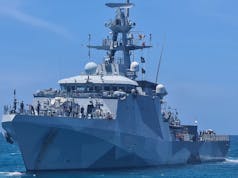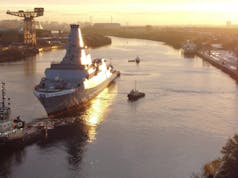American aircraft carrier USS Gerald R. Ford departed its homeport of Norfolk to begin Aircraft Compatibility Testing.
The US Navy say that Aircraft Compatibility Testing (ACT) continues the at-sea testing of Electromagnetic Aircraft Launch System (EMALS) and Advanced Arresting Gear (AAG) – two Aircraft Launch and Recovery Equipment (ALRE) systems unique to Ford – previously conducted in 2018 by the F/A-18 E/F Super Hornet.
During this upcoming phase of ACT, compatibility testing will include: T-45 Goshawks, F/A-18 E/F Super Hornets, and E/A-18G Growlers from Air Test and Evaluation Squadron 23 (VX-23); and E-2D Advanced Hawkeyes and C-2A Greyhounds, from Air Test and Evaluation Squadron 20 (VX-20). This will be the first time the T-45, E-2D, C-2A and E/A-18G aircraft will launch and recover from the US Navy’s newest aircraft carrier.
“Ford is now proving all of the test-work accomplished at Joint Base McGuire-Dix-Lakehurst, N.J. over the last year-and-a-half, that we can fly fleet aircraft as a ship with EMALS and AAG integrated,” said Cmdr. Mehdi Akacem, Ford’s Air Boss.
“This is very exciting, and it is the culmination of a year-and-a-half of training, anticipation, and teamwork.”
Ford last flew aircraft in January 2018 and has 747 launches and arrestments to date.
This round of testing will allow the crew to further test the improvements made during its post-shakedown availability (PSA) at Huntington Ingalls Industries-Newport News Shipbuilding while also allowing the crew to gain experience on these unique systems.
The Gerald R. Ford is intended to be the first of a class of aircraft carriers that offer significant performance improvements over the previous Nimitz class. Gerald R. Ford is equipped with an AN/SPY-3 and AN/SPY-4 active electronically scanned array multi-function radar, and an island that is shorter in length and 20 feet taller than that of the Nimitz class; it is set 140 feet further aft and 3 feet closer to the edge of the ship.
Replacing traditional steam catapults, the Electromagnetic Aircraft Launch System (EMALS) will launch all carrier aircraft. This innovation eliminates the traditional requirement to generate and store steam, freeing up considerable area below-deck. With the EMALS, Gerald R. Ford can accomplish 25% more aircraft launches per day than the Nimitz class and requires 25% fewer crew members. The US Navy estimates it will save $4 billion in operating costs over a 50-year lifespan.
These performance enhancements were problematic in Pentagon tests, but it is hoped that final fixes for some of the problems are forthcoming.













Let’s hope the problems are finally solved. New technology has to be committed to despite the short term disadvantages it often brings, despite the Presidents deluded ill educated commentary on such progress. Have to say mind that island being so far back puts a massive reliance on technology to stop taking out anything in front.
No more than a modern super tanker, especially something like the TI class which is much heavier and longer than Ford and has the bridge etc even further back.
was she ever shock-tested? I recall there was a bit of too-ing & fro-ing over the issue.
Nice retro paint job on that T45.